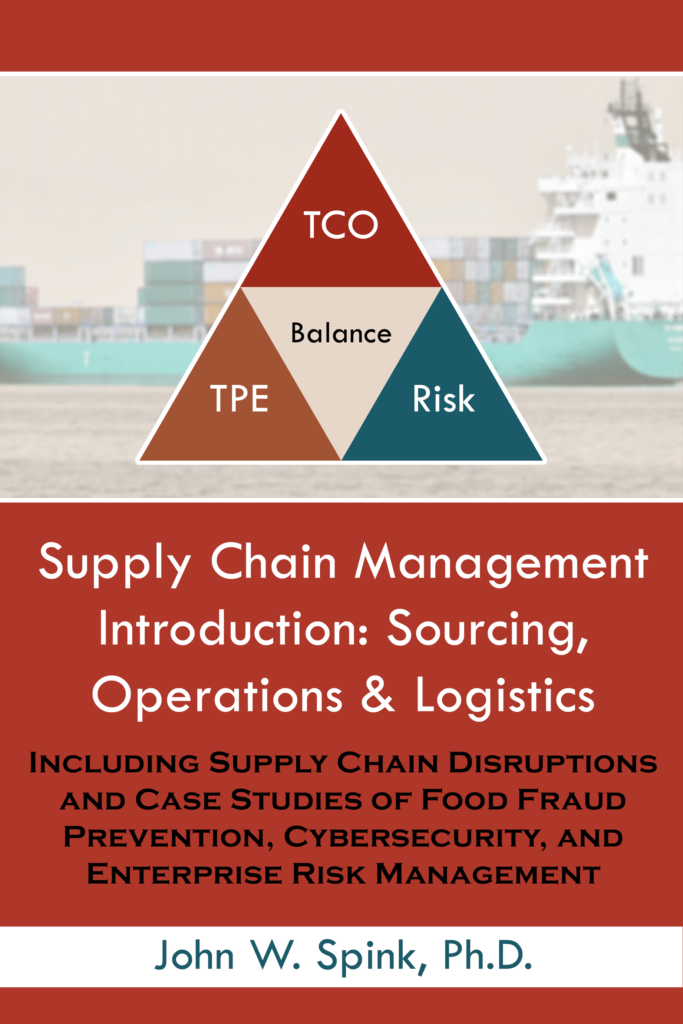
Coming Soon!
Subscribe below to be notified
when the book is available.
Subscribers will receive email updates.
Table of Contents:
PART I: BACKGROUND
Chapter 1: INTRODUCTION – Corporate Structure & Supply Chain Management
PART II: CORE CONCEPTS
Chapter 2: CORE: Integrated Supply Chain Management
Chapter 3: CORE: Operations & Manufacturing Management
Chapter 4: CORE: Procurement
Chapter 5: CORE: Logistics
PART III: FUNCTIONS & APPLICATION
Chapter 6: FUNCTION: Quality
Chapter 7: FUNCTION: Lean Systems Approach Philosophy
Chapter 8: FUNCTION: Risk Management
Chapter 9: FUNCTION: Enterprise Risk Management (ERM)– Internal Controls/Integrated Framework
Chapter 10: FUNCTION: Packaging and the Package
Chapter 11: APPLICATION: Disruptive Innovation and Industry Disruptors
Chapter 12: APPLICATION: Corporate Social Responsibility (CSR) – Sustainability, Social Welfare, and Employee Relations
Chapter 13: Cyber-Security for SCM and Food Safety Management
PART IV: SUPPLY CHAIN RISK MANAGEMENT & SUPPLY CHAIN DISRUPTIONS
Chapter 14: Introduction to Supply Chain Risk Management (SCRM) and Supply Chain Disruption (SCD)
Chapter 15: Managing Supply Chain Disruptions
Chapter 16: Enabling the Interdisciplinary Leap to Prevention – from Supply Chain Management to Criminology
Chapter 17: SCM Product Fraud and Counterfeiting
PART V: CASE STUDY: FOOD SUPPLY DISRUPTIONS: FOOD QUALITY, FOOD SAFETY, FOOD FRAUD AND FOOD DEFENSE
Chapter 18: FUNCTION: Protecting vs Food Supply Chain Disruptions
Chapter 19: Unintentional and Intentional Supply Chain Risks Disruptions
Chapter 20: Food safety management Systems (FSMS)
Chapter 21: CASE STUDY: Protecting the Food Supply Chain from Disruptions: Food Quality and Food Safety
Chapter 22: CASE STUDY: Food Fraud (Intentional Act for economic gain)
Chapter 23: CASE STUDY: Food Defense (Intentional Act with the intent for harm)
PART VI: IMPLEMENTATION–GETTING STARTED & HOW MUCH IS ENOUGH?
Chapter 24: APPLICATION: How to Address risk/ disruption – How to Start and how much is enough?
PART VII: CONCLUSION
